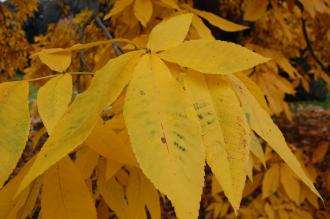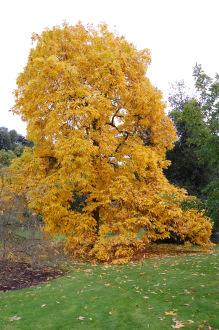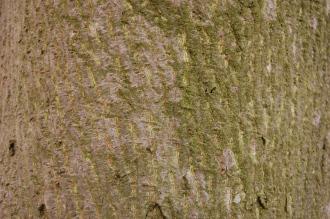
Carya ovata Autumn Leaf (20/10/2012, Kew Gardens, London)
Position: Full sun to light shade
Flowering period: Late spring
Soil: Moist, well drained
Eventual Height: 25m
Eventual Spread: 15m
Hardiness: 4b – 8b
Family: Juglandaceae
Carya ovata is a large, long lived, deciduous tree with a cylindrical habit. Its mid green leaves are pinnate with up to 7 leaflets and up to 60cm long. Its leaflets are elliptic with serrate margins. Its leaves turn yellow in autumn before they fall. Its grey/ brown bark is smooth when young, becoming shaggy with age. Its flowers are monoecious and wind pollinated. Its yellow/ green male flowers are catkins, appearing in groups of up to 3 and up to 7cm long. The female are very short and appear in terminal spikes. Its fruit is an egg shaped drupe which is up to 4cm long, this contains an edible nut.

Carya ovata (20/10/2012, Kew Gardens, London)
Carya ovata, commonly known as the Shagbark Hickory, is native to east USA and south east Canada. It was introduced into the UK in 1629.
The etymological root of the binomial name Carya is derived from the GreekKaria, the ancient Greek name for the ‘Walnut’. Ovata is derived from the Latin ovatus meaning ‘egg shaped’, in reference to the fruit shape.
The landscape architect may find Carya ovata useful as a large specimen parkland tree. Care should be taken when locating this tree as the large nuts may cause damage to cars.
Ecologically, Carya ovata nuts are attractive to mammals.
Carya ovata prefers moist, deep, humus rich, well-drained soils. It tolerates most pH of soil.

Carya ovata Bark (20/10/2012, Kew Gardens, London)

